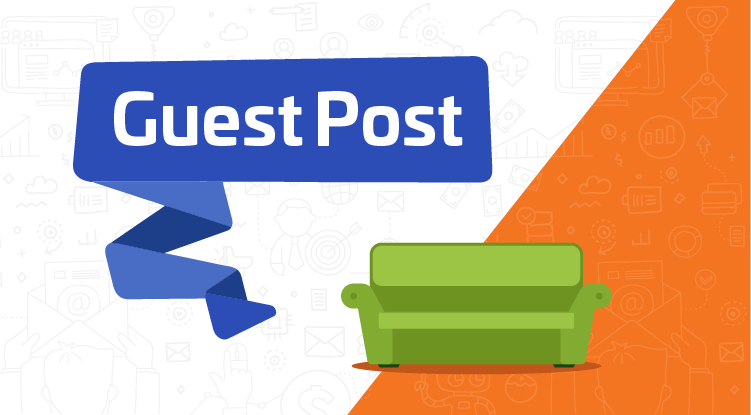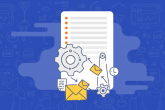We’ve recently looked at nine emotional triggers that can be used in email marketing. Today, we would like to learn more about how customer behaviour and actions can help improve email marketing. Behavioural marketing practice isn’t new, but its adoption feels somewhat slow.
So, let’s see what behavioural email marketing is all about!
What is Behavioural Marketing?
Behavioural marketing practice is used to display targeted content based on the user’s previous actions and behaviours. Behavioural marketing can be applied to various digital channels. Therefore, in general, targeted content is not limited to emails but can also be digital ads and other types of content.
Behavioural Email Marketing Drives Engagement
It’s a universal marketing truth: the more relevant the content, the higher chance for a positive reaction and action.
Emails sent using behavioural triggers will drive better results, such as better email open rates and clicks. With behavioural marketing, you’ll also learn to understand and address customers’ needs and, in turn, boost customer engagement.
With behavioural triggers, your automated journeys and sales funnels can become much more effective. You can achieve precise email delivery when customers are interested and active and share content that is relevant to each of the recipients.
Identify Behavioural Triggers That Can Be Used in Your Workflows
Behavioural email marketing automation can use multiple triggers to enhance the customer journey flows. Moreover, customer actions and behaviour can give great insights to develop targeted marketing segmentation.
Here are some examples of customer actions (or lack of actions) you can consider for your email marketing:
- Interactions with your email marketing campaigns
- Landing page and website actions and behaviour
- Browsing history
- Purchasing history
- Social media triggers
- App data
You don’t need to have all possible triggers ready to start email marketing customer journeys. Not all actions should result in an email deployment.
However, understanding them and their impact on your business, results, and KPIs is important. Try to review what actions your customers or leads are taking (or are not taking). Brainstorm how this information helps you optimise and improve your email marketing content, segmentation and automation.
Behavioural Trigger Workflows: Email Examples
Let’s take a look at some good examples of behavioural targeting. The first automated flow that illustrates it well is the abandoned cart email. In this scenario, a customer leaves items in their virtual shopping cart and does not complete the check-out. This is a perfect behavioural trigger for a very effective email reminder. You can learn more about abandoned cart emails here.
Here’s a beautiful cart abandonment email from Peel, encouraging the recipient to complete the check-out:
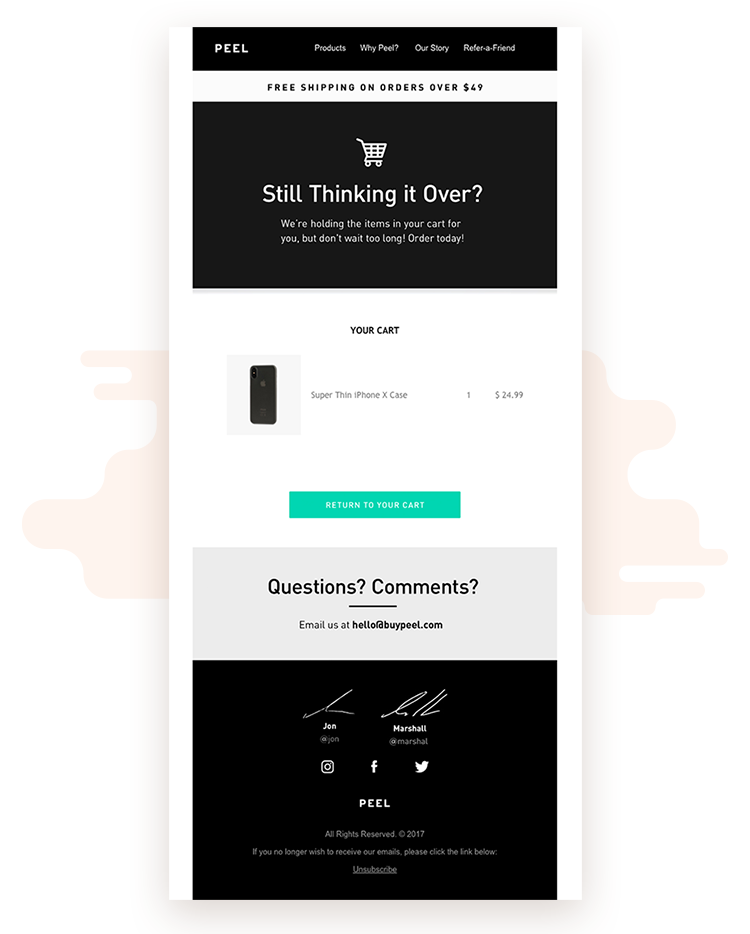
Many companies use lead magnets to increase their subscription rate or drive sales.
Let’s say an online business is offering an ebook to new subscribers. A form is being submitted – an email with the download link is being sent. From that point, other behavioural triggers can be added to the workflow: such as downloading the e-book or, on the contrary, not opening the email with the download link at all.
These triggers can be used to send highly targeted emails to the recipients.
Here’s an example from Pixel Buddha – a clean transactional email with the download link.
This email deployment is triggered by customers’ actions. That said, if you have proper marketing consent, this email can easily be converted into a message with more promotional content or developed into a series of emails to encourage feedback and move customers further down the sales funnels.
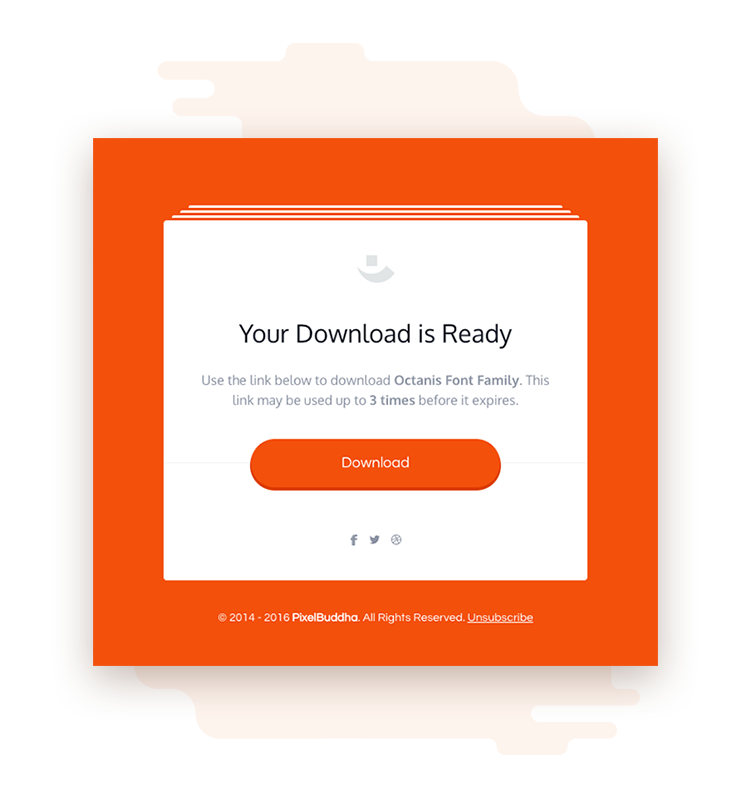
If you use Amazon for online shopping, you have probably seen many emails sent based on your purchase or browsing history. For instance, you’ve been looking for gifts for kids but haven’t purchased anything. Shortly after, you’ll get emails with product recommendations based on your search.
Here’s another example. After searching for video game chairs on Amazon, this email was received:
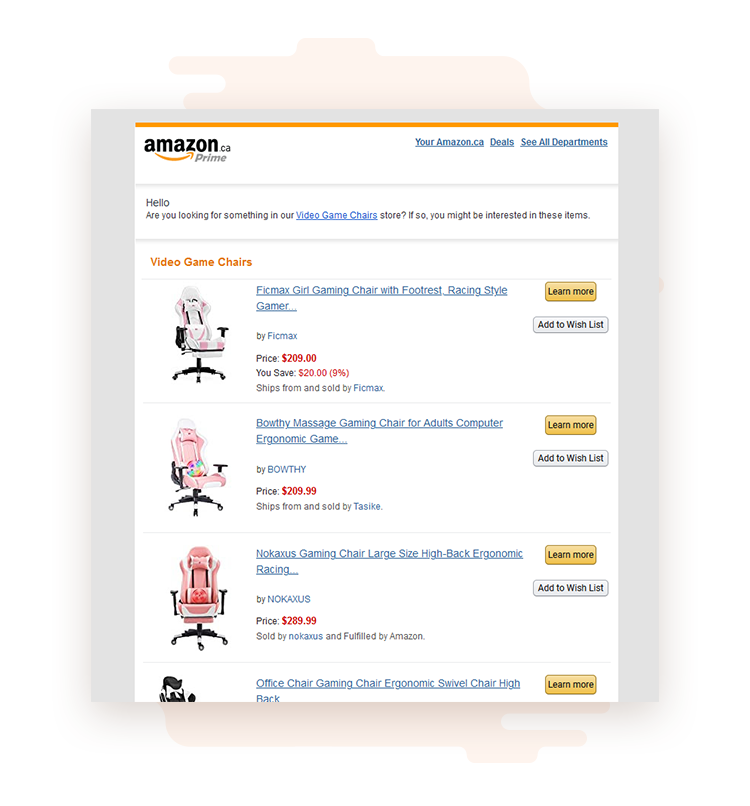
Behavioural marketing mechanism is based on reacting to customers’ choices, their actions. If you analyse their behaviour, you can craft better automated email campaigns: they will feel more unique and relevant to each recipient.
Behavioural Segmentation
Behavioural triggers are very useful in email marketing automation and workflow building
. In addition to direct triggers and automation, you can use behavioural data to build meaningful segments too. While there might be many different types of behavioural segmentation, here’s a quick review of the most popular methods:
- Segmentation based on purchase behaviour: this segmentation can provide beneficial insights into what stage of their purchasing journey the customers are in. This will be very handy for marketers looking for ways to influence their customer decisions.
- Segmentation based on occasion or timing: these segments can help you find leads or customers who are most likely to interact with your brand or make a purchase on specific occasions, such as Black Friday or Christmas. Sometimes, this can even provide segments based on particular times: for example, group all customers who usually open their emails on Sunday afternoons.
- Benefits sought segmentation: a segment of your subscribers based on the unique value propositions they are looking to gain. Some customers might be looking for a lower price. Others might be searching for exceptional quality and big brand names.
- Segmentation based on customer loyalty: these segments can help you group your subscribers into different lists based on their different stages of brand loyalty.
Final Thoughts
With behavioural email marketing, businesses can significantly improve their email marketing quality and customer experience. It’s not surprising because the more relevant and timely your emails are, the more likely you’ll get a positive reaction from your recipients. This will help you drive engagement and results.
Start by identifying possible behavioural triggers, analyse your audience behaviour, build your flows and create segments. It’s definitely worth the effort!
𝑻𝒉𝒊𝒔 𝒂𝒓𝒕𝒊𝒄𝒍𝒆 𝒉𝒂𝒔 𝒃𝒆𝒆𝒏 𝒎𝒂𝒅𝒆 𝒃𝒚 𝑺𝒎𝒂𝒊𝒍𝒚. 𝑨𝒏 𝒆𝒎𝒂𝒊𝒍 𝒎𝒂𝒓𝒌𝒆𝒕𝒊𝒏𝒈 𝒍𝒆𝒂𝒅𝒆𝒓 𝒊𝒏 𝑬𝒔𝒕𝒐𝒏𝒊𝒂 𝒂𝒏𝒅 𝒐𝒏 𝒕𝒉𝒆 𝒔𝒉𝒐𝒓𝒕𝒍𝒊𝒔𝒕 𝒊𝒏 𝒕𝒉𝒆 𝑩𝒂𝒍𝒕𝒊𝒄𝒔 𝒂𝒏𝒅 𝑺𝒄𝒂𝒏𝒅𝒊𝒏𝒂𝒗𝒊𝒂, 𝒃𝒆𝒆𝒏 𝒐𝒏 𝒕𝒉𝒆 𝒎𝒂𝒓𝒌𝒆𝒕 𝒇𝒐𝒓 𝒕𝒉𝒆 𝒑𝒂𝒔𝒕 15 𝒚𝒆𝒂𝒓𝒔. 𝑺𝒎𝒂𝒊𝒍𝒚’𝒔 𝒎𝒊𝒔𝒔𝒊𝒐𝒏 𝒊𝒔 𝒕𝒐 𝒐𝒇𝒇𝒆𝒓 𝒔𝒊𝒎𝒑𝒍𝒆 𝒂𝒏𝒅 𝒗𝒊𝒔𝒖𝒂𝒍𝒍𝒚 𝒃𝒆𝒂𝒖𝒕𝒊𝒇𝒖𝒍 𝒕𝒐𝒐𝒍𝒔 𝒇𝒐𝒓 𝒏𝒆𝒘𝒔𝒍𝒆𝒕𝒕𝒆𝒓𝒔.


